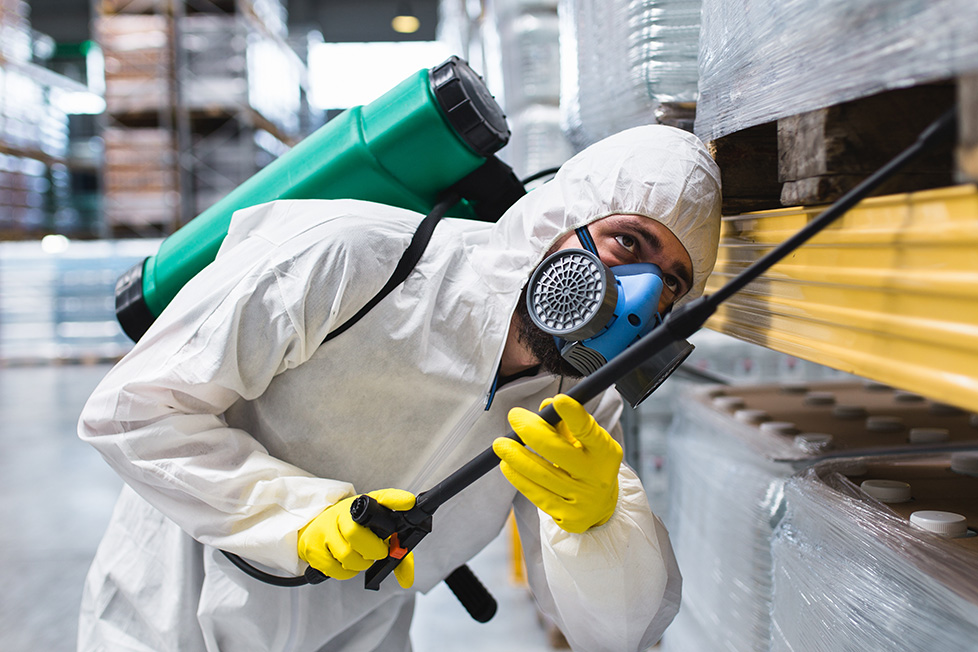Choose expert Pest Control to ensure a pest-free living space.
Wiki Article
Eco-Friendly Parasite Control Approaches for Handling Wildlife in Urban Areas
Urban areas commonly discover themselves at the intersection of human activity and wildlife, causing unique obstacles in parasite monitoring. Environmentally friendly strategies highlight lasting conjunction, utilizing techniques such as environment adjustment and natural repellents to alleviate human-wildlife problems. These methods not just safeguard the environment however also boost area interaction in wildlife monitoring. As city populations proceed to expand, recognizing the characteristics of wild animals communications ends up being progressively essential. What ingenious methods can be executed to make sure both environmental equilibrium and metropolitan security? Discovering this inquiry reveals an engaging landscape of possible services.Understanding Urban Wildlife Dynamics
Recognizing Urban Wild animals Characteristics is crucial for developing efficient and environment-friendly pest control strategies. Urban areas are increasingly coming to be environments for various wild animals varieties, driven by factors such as environment fragmentation, food schedule, and human advancement. Acknowledging these characteristics allows for a nuanced technique to pest management that straightens with ecological concepts.Urban wildlife often includes varieties such as raccoons, squirrels, and birds, which adjust to city settings, discovering niches in environment-friendly rooms, parks, and even houses. Their presence can result in conflicts with people, especially when they exploit personnels for food and sanctuary. Comprehending the behaviors and eco-friendly functions of these species notifies methods that decrease unfavorable communications while promoting biodiversity.
Additionally, recognizing the interdependencies within metropolitan ecosystems assists in recognizing vital locations for habitat preservation and remediation. This expertise adds to the advancement of incorporated pest monitoring (IPM) techniques that consider the eco-friendly balance, therefore lowering dependence on harmful chemicals. By cultivating conjunction between humans and metropolitan wildlife, cities can create much healthier settings that profit both homeowners and neighborhood environments, leading the method for lasting city living.
All-natural Repellents and Deterrents
Natural repellents and deterrents offer a sustainable alternative to traditional pest control techniques by using the power of nature to keep unwanted species at bay. These environment-friendly remedies commonly use plant-based active ingredients, vital oils, and other normally happening compounds that hinder parasites without damaging the setting.One efficient all-natural repellent is peppermint oil, which is understood to drive away rats and bugs. Its solid fragrance is undesirable to several bugs, making it a prominent choice for urban setups. Vinegar and citrus peels can serve as deterrents, as their strong smells are typically unattractive to various wild animals.
In addition, diatomaceous earth is a natural powder that can be spread in areas vulnerable to insect activity, successfully drying out and deterring pests without posturing risks to non-target species. Garlic sprays and neem oil are identified for their capacity to drive away a vast array of bugs, consisting of published here both bugs and bigger wild animals.
Applying these all-natural repellents not only decreases dependence on chemical pesticides however likewise promotes a much healthier urban ecosystem, fostering an extra well balanced conjunction in between humans and wild animals. By making use of these methods, metropolitan areas can successfully manage insect populations while reducing environmental impact.
Environment Alteration Techniques
Reliable environment modification strategies play a vital function in lasting pest management by altering the atmosphere to make it much less for pest problems. By understanding the ecological characteristics of metropolitan areas, building proprietors can execute strategic adjustments that hinder bugs while promoting biodiversity.(Commercial pest control Port Charlotte)One primary method entails preserving appropriate cleanliness. This consists of normal waste removal, safeguarding trash can, and eliminating standing water to reduce breeding sites for bugs and rats. In addition, landscape design techniques such as picking indigenous plants can boost environmental balance, giving habitats for advantageous microorganisms while decreasing resources for insects.
An additional essential strategy is to seal entrance factors in structures. Checking and fixing cracks in foundations, wall surfaces, and windows can significantly minimize insect gain access to. Developing physical obstacles, such as fencings or plant buffers, can inhibit wild animals movement right into human-inhabited areas.
Integrated Pest Monitoring Practices
Building upon habitat alteration techniques, integrated parasite administration (IPM) techniques provide an all natural method to regulating insect populations while decreasing ecological influence. IPM integrates different techniques, consisting of biological, social, mechanical, and chemical controls, to achieve efficient insect administration.Organic control entails the intro of all-natural predators or parasites to lower bug populations. Cultural methods, such as plant rotation and hygiene, interrupt pest life cycles and diminish their habitats - Pest control service. Mechanical controls, like traps and obstacles, provide prompt alleviation from bug pressures without chemical treatment
Chemical controls are utilized as a last hotel, concentrating on targeted applications that limit injury to non-target types and the atmosphere. The selection of eco-friendly chemicals, when required, is essential to the IPM structure. In addition, keeping track of pest populaces and analyzing prospective damage helps notify decision-making, making certain that interventions are timely and reliable.
Community Involvement and Education

(Residential pest control Port Charlotte)Workshops and educational sessions can furnish citizens with understanding regarding indigenous species, habitat preservation, and effective safe insect management techniques. Collaboration with institutions, local organizations, and federal government companies better enhances instructional outreach, ensuring that vital details reaches diverse audiences.
Moreover, community-led campaigns, such as area clean-up days and environment restoration projects, not just advertise biodiversity however also reinforce neighborhood ties. Pest Control. By encouraging residents to share their experiences and observations, areas can establish targeted strategies that deal with details local parasite issues
Including comments from homeowners right into pest monitoring prepares enables a much more receptive and adaptive method to wildlife challenges. Eventually, notified and involved neighborhoods are crucial to accomplishing long-lasting success in environmentally friendly pest control, leading to much healthier metropolitan atmospheres that appreciate both human and environmental demands.

Final Thought
In conclusion, eco-friendly parasite control comes close to offer sustainable options for managing metropolitan wild animals. By focusing on environment alteration, using all-natural repellents, and applying integrated parasite administration techniques, communities can cultivate a harmonious conjunction with local animals.Report this wiki page